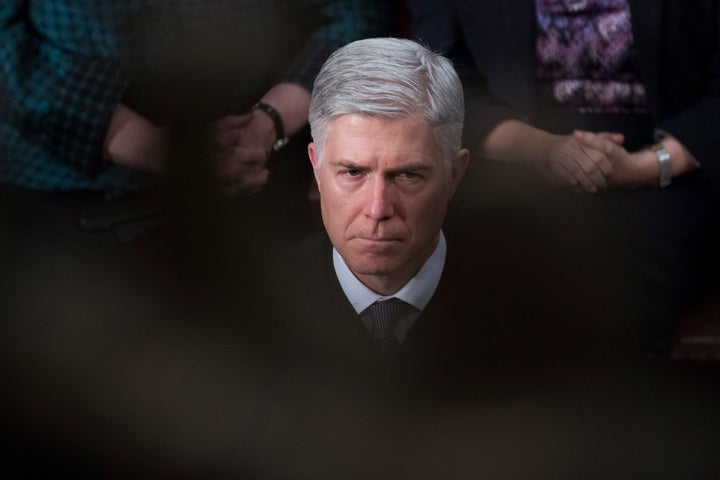
A local newspaper wants to know exactly how much money retail stores earn from food stamp transactions, and the retail food industry is fighting the disclosure all the way to the Supreme Court.
Last week, Justice Neil Gorsuch temporarily stayed a lower court’s order requiring the government to cough up the data. Now grocers have a chance to try to convince the Supreme Court to take the case.
The Supplemental Nutrition Assistance Program is the federal government’s most responsive economic safety net, giving 40 million Americans a monthly food allowance that can only be spent at food stores and farmers markets. The program dishes out $60 billion in benefits annually, which amounts to a significant portion of retail stores’ income.
Throughout the program’s history, politicians and news reporters have obsessed over what people purchase with their benefits. In the 1970s, President Ronald Reagan speechified about “strapping young bucks” buying T-bone steaks, a fist-shaking tradition Republicans have continued to this day. The benefits used to be distributed on actual stamps but now go on debit cards that are still highly visible in checkout lines.
The legal case is more about who is selling the food than what the beneficiaries are buying. The Argus Leader, a newspaper in Sioux Falls, South Dakota, filed a records request for store-level SNAP spending data in 2011. When the U.S. Department of Agriculture, which administers the program, didn’t hand over the details, the paper sued.
“Taxpayers need to know where their money is spent,” Cory Myers, the Argus Leader’s news director, said earlier this year. “This information has importance beyond South Dakota as SNAP is one of the nation’s biggest safety net programs.”
The USDA already provides some detail about where food stamps go. Half of all benefits were spent at superstores like Walmart in 2017. Nearly 30 percent were used at supermarkets like Safeway. More than 258,000 firms were authorized to accept SNAP benefits that year. The USDA has also put out detailed information about what people buy.
The Argus Leader wants to know exactly how much was spent and at exactly which stores. The government argued that disclosing dollar figures for individual firms would hurt their business and that the details should be exempt from the Freedom of Information Act.
Courts sided with the paper and the USDA gave up on the case, but then retail trade associations swooped in with additional appeals. Among other things, the Food Marketing Institute argued that negative attitudes toward food stamp recipients could cause landlords to increase rent when they learn their tenants process government benefits.
“The stigma might also cause non-SNAP recipients to avoid stores with high SNAP volume, either because of beliefs about the store or a fear of being perceived as SNAP customers,” the Food Marketing Institute told an appeals court in 2017.
Stewart Fried, an attorney for the National Grocers Association, argued in an August 2017 brief that retailers would stop accepting SNAP benefits. He said the disclosure “does not shed light on what the federal government is up to,” since so much detail is already available. Additionally, he said, “gaining access to a competitor’s store-level sales data is the holy grail of the retail food industry,” because the information can influence decisions about where to open new stores.
So far, courts have not agreed, calling the stigma argument “speculative” and saying releasing the data seems unlikely to hurt anyone’s business too much. Gorsuch has given retailers a chance to argue this month that the disclosure should be further delayed so the court can consider whether to take the case.
